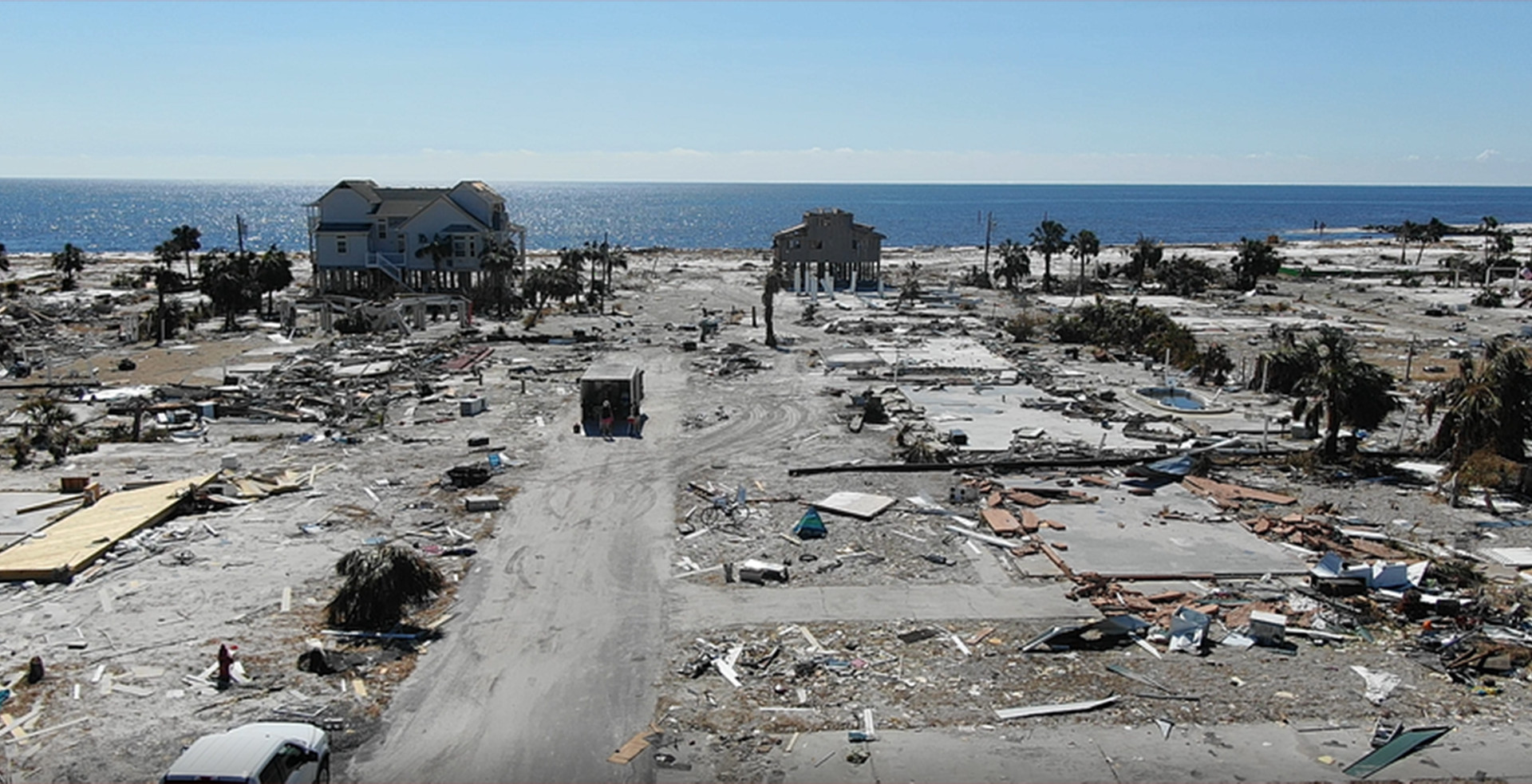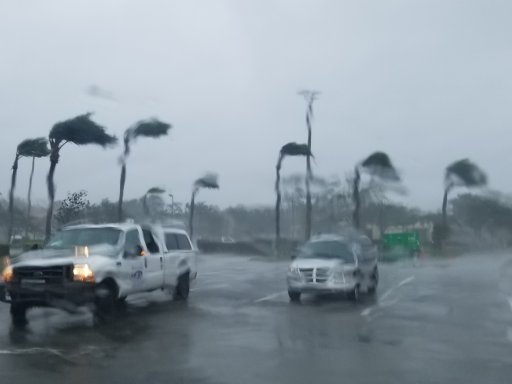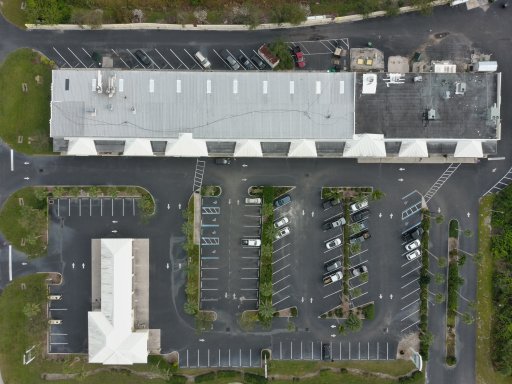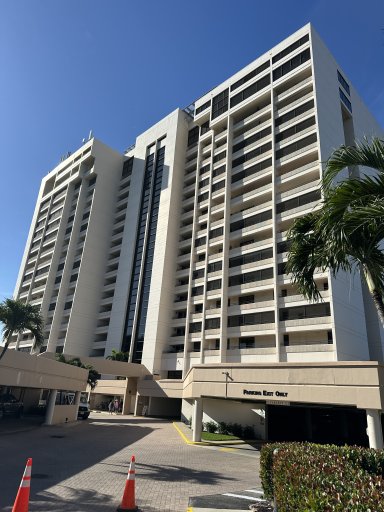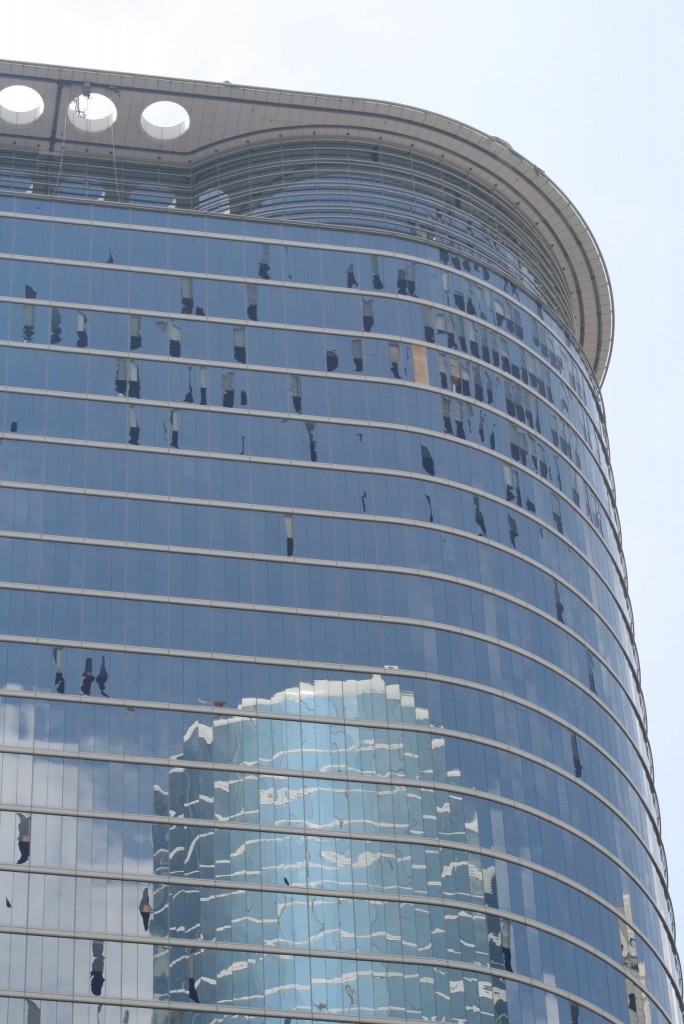
Wind being a top down inspection typically will be roof heavy with careful review of the attachment of the roof membrane. Leading edge, mechanical equipment damage, fastener withdraw, flying debris and and water intrusion make up the early candidates for further consideration. Complete use reproducible methods to test buildings using astm and other standards.
Window Fenestration and Intrusion surveys are a core competency of our group. We use the knowledge of the load on the system based on the known weather conditions, design compliance and water management weeps and drains to understand if there is a failure allowing water intrusion where and why. This is often useful in commercial condo claims following hurricanes.
We were there early on after Hurricane Ike and caught this images of downtown Houston Texas. Many of the downtown buildings had glass breakage on their top floors. This damages is related to both the increased wind speeds created in the confined spaces between buildings and the sheer height of the buildings. Add some ballast or gravel from a poorly placed down wind building and you have a need for small missile impact glass on towers. We know wind and we are always there first let us get ahead for your group.
Our team of meteorologists, professional engineers, certified consulting meteorologists and general contractors understand the effects of wind damage from the lab, the field and the code book.
The difficulty with wind damage, especially in newer better built structures, is the rain that typically gets inside the structure after the removal of the weatherproofing exterior materials, windows, roof or siding. During Hurricane Ivan 15.79 inches of rain came down the night of the storm in the Pensacola, Florida area. That is a column of water 15 inches tall at every opening. The fact that mold is ubiquitous means it will form anywhere there is cellulose, water and preferably darkness. This is the recipe for many building after a hurricane when the occupants have evacuated, especially on barrier islands where the access after a storm is limited. Very often it will take weeks before municipalities and local government will allow re-entry as they deal with utilities failure. Complete understands based on decades in the field what to expect before the unexpected.
Consider Complete if you need a meteorologist, engineer or other consultants to inspect for wind damage.
